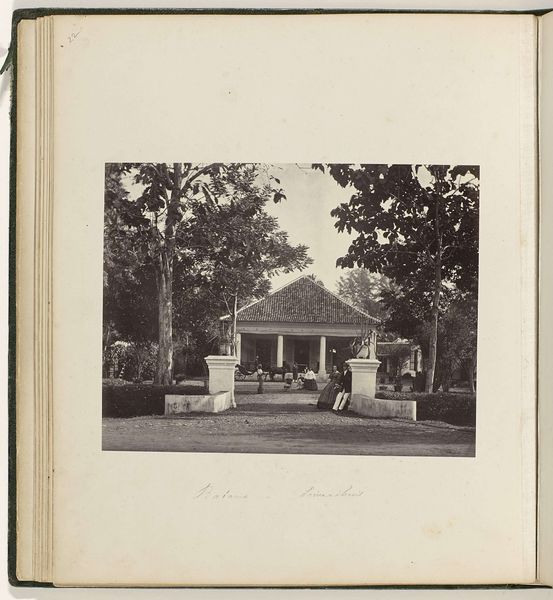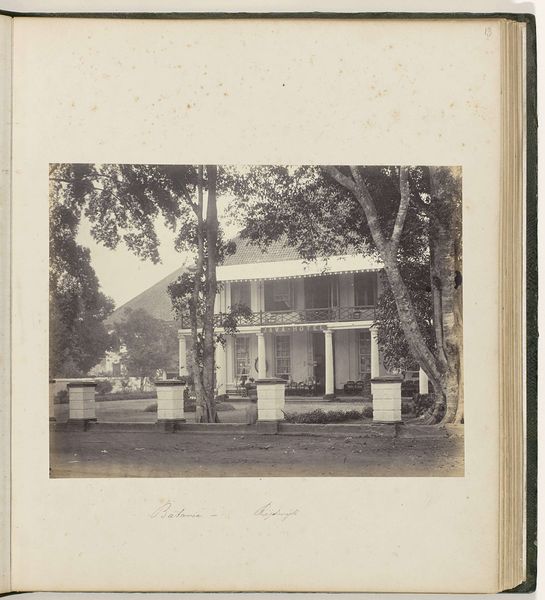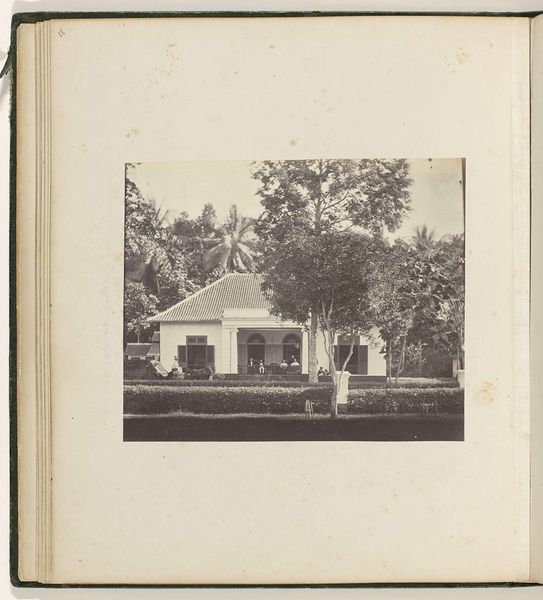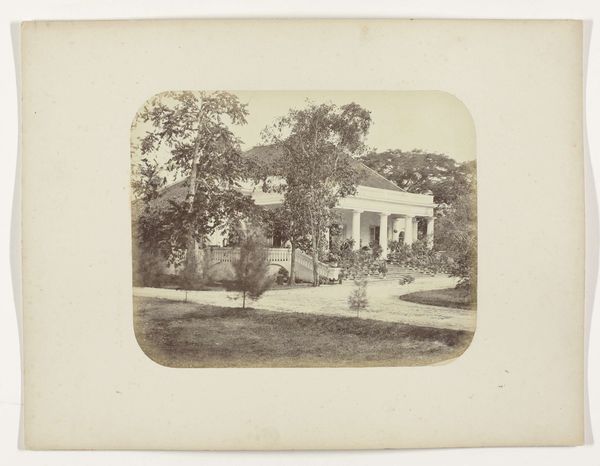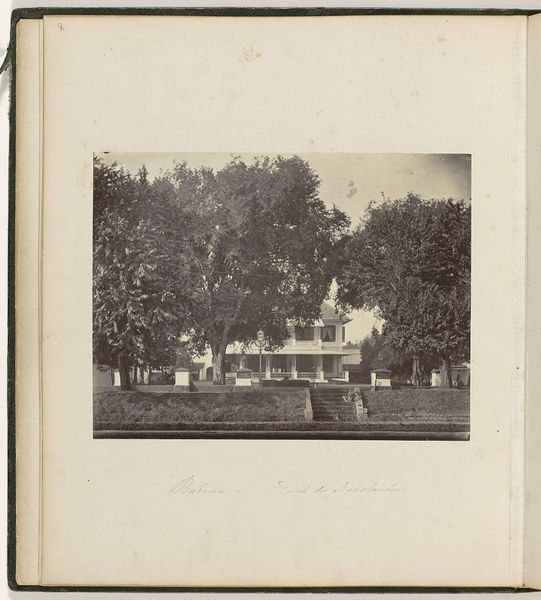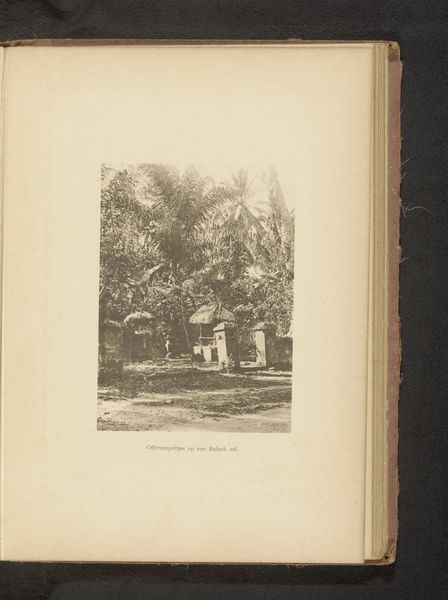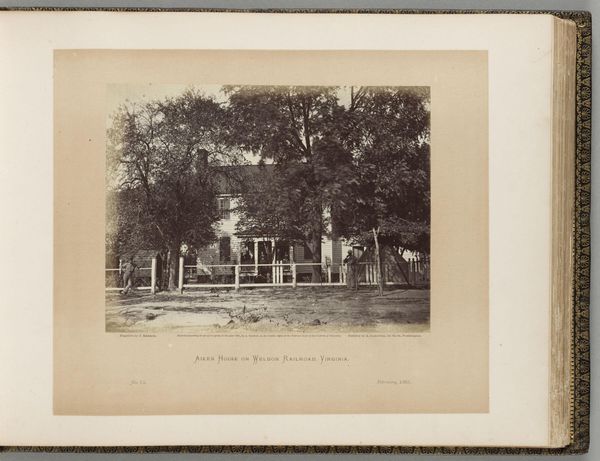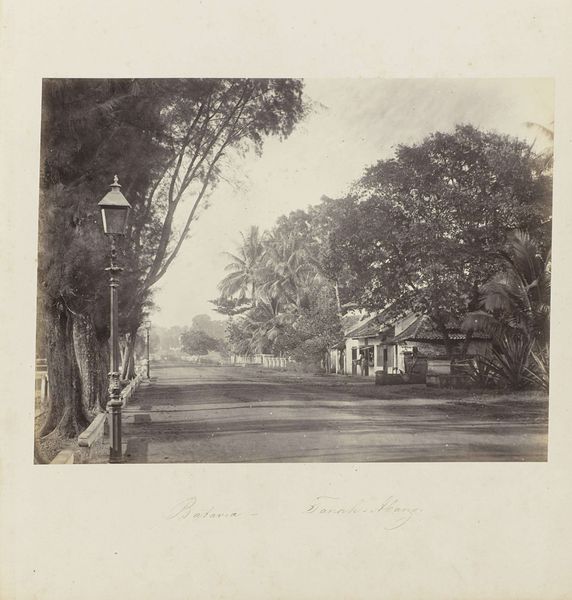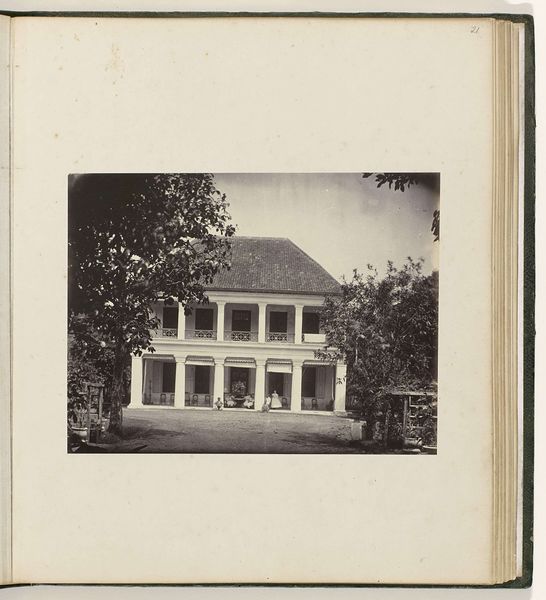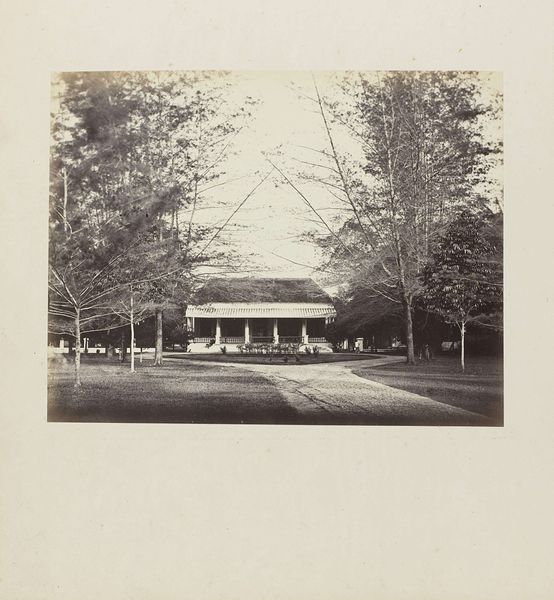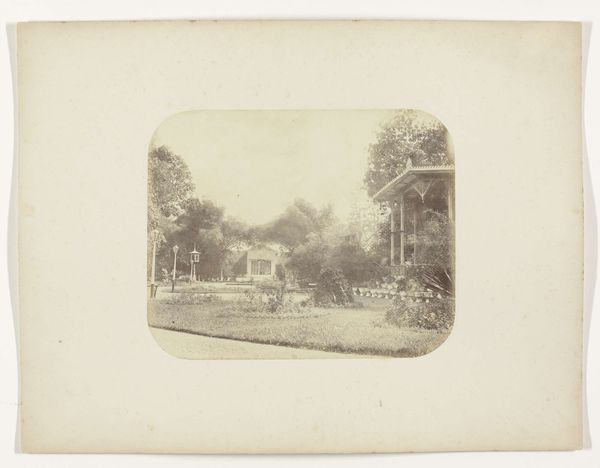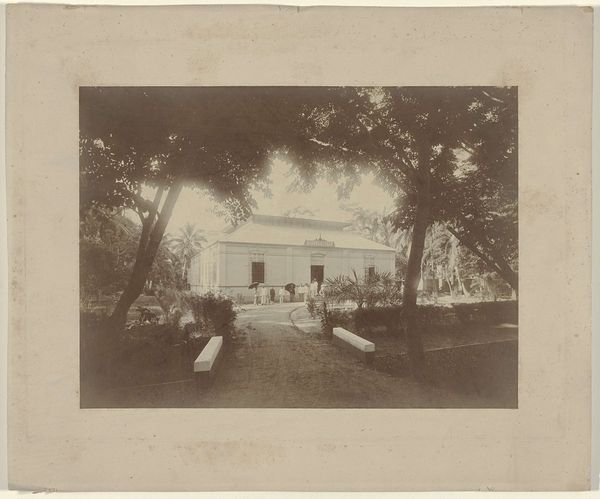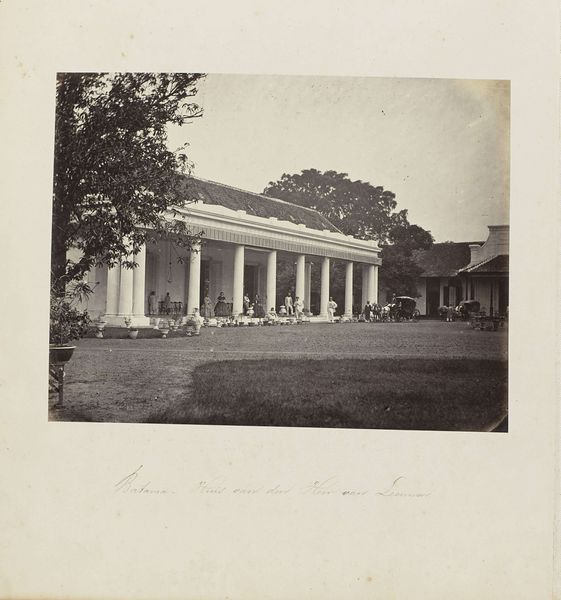
photography, site-specific, gelatin-silver-print
#
landscape
#
photography
#
orientalism
#
site-specific
#
gelatin-silver-print
Dimensions: height 185 mm, width 239 mm
Copyright: Rijks Museum: Open Domain
Curator: A fascinating look at a private residence in the Dutch East Indies. This gelatin-silver print, created between 1863 and 1866 by Woodbury & Page, is titled "Batavia - Privaathuis (mr. van Delden)." It is part of the Rijksmuseum's collection and provides a valuable insight into colonial life and architecture of the era. Editor: It strikes me as immediately serene. The house is set back, almost screened by the large, mature trees. The tonal range in the photograph, however limited, lends an airy, atmospheric quality, focusing the eye toward that distant light colored building. Curator: Absolutely. It's a carefully constructed image designed to project a specific image of colonial prosperity and control. The choice of this architectural style, European yet adapted for the tropical climate, speaks volumes about the Dutch presence and their efforts to establish a lasting legacy. It’s no accident that the local environment is tamed in this depiction. Editor: The horizontal composition also lends itself to that sense of control. The strong line of the lawn bisects the frame, grounding the image. Then the house provides another, more delicate, horizontal accent. It guides the eye smoothly. Curator: And it speaks to a clear social hierarchy. Consider the labour required to maintain the grounds in such immaculate condition, implicitly highlighting the power dynamics inherent in colonial society. It is far more than just a simple landscape photograph, its is a cultural statement. Editor: Perhaps, yet I’m also struck by the photographer's almost painterly treatment of light and shadow. Notice how the dense foliage creates these pockets of darkness that offset the brightness of the house, heightening the illusion of depth, playing with the traditional techniques. It could be an impressionist canvas with the reduction to near monochrome. Curator: True, but this is a commercial photograph. The picturesque framing wasn't about pure artistry; it served to reinforce the desirability and success of colonial life for its intended audience. The sale and circulation of these images cemented certain views. Editor: I suppose it comes down to interpretation, doesn't it? Looking at it as a purely constructed artwork is useful in deciphering the intentions in terms of perspective and tone. Curator: Indeed. The inherent social dynamics combined with formal composition result in a nuanced piece of history that challenges our modern gaze.
Comments
No comments
Be the first to comment and join the conversation on the ultimate creative platform.
